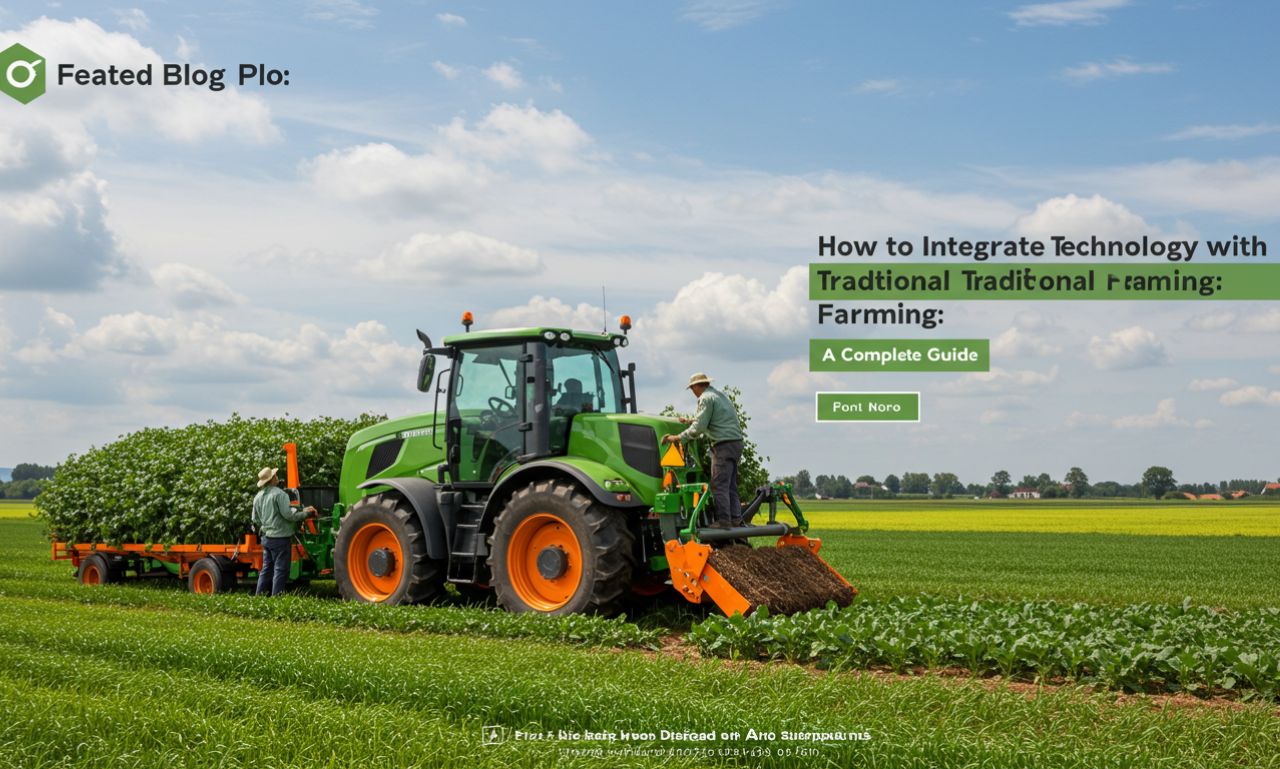Agriculture has always been the backbone of human civilization, but with global food demand rising and natural resources under pressure, farmers face a new challenge: how to produce more with less. Traditional farming methods, while rich in wisdom and cultural significance, often struggle to meet today’s efficiency and sustainability demands.
This is where technology comes in. By blending modern agricultural innovations with time-tested traditional practices, farmers can increase yields, reduce waste, and create more resilient food systems. In this article, we’ll explore how to integrate technology with traditional farming, the benefits, challenges, and future trends shaping this transformation.
Understanding the Balance Between Tradition and Innovation
What Is Traditional Farming?
Traditional farming refers to age-old practices such as crop rotation, organic fertilizers, manual labor, and rain-fed irrigation. These methods are environmentally friendly but may limit productivity on a large scale.
Role of Technology in Agriculture
Technology in farming means using modern tools and systems like sensors, drones, artificial intelligence, and IoT devices to enhance efficiency. The goal isn’t to replace tradition but to complement it for better outcomes.
Benefits of Integrating Technology into Traditional Farming
Increased Efficiency and Productivity
With tools like drones and automated tractors, farmers can cover more ground, monitor crops in real-time, and reduce manual labor.
Sustainable Resource Management
Smart irrigation and soil sensors help save water and fertilizers, protecting natural resources for future generations.
Improved Crop Yields and Food Security
Big data analytics predicts pest outbreaks, climate changes, and soil health, allowing farmers to take preventive action.
Cost Savings and Profitability
While initial investments can be high, the long-term return on investment is significant due to reduced input costs and higher output.
Modern Technologies Transforming Traditional Farming
Precision Agriculture (Drones, Sensors, GPS)
Farmers use drones for crop surveillance, spraying pesticides, and mapping fields, reducing waste and boosting yields.
Smart Irrigation Systems and Water Management
IoT-powered irrigation ensures crops receive water only when necessary, preventing overuse.
Artificial Intelligence and Big Data in Agriculture
AI-powered tools analyze weather patterns and soil health, offering data-driven recommendations.
Robotics and Automated Machinery
Machines handle planting, harvesting, and weeding, reducing dependency on manual labor.
Internet of Things (IoT) in Farming
IoT devices monitor soil nutrients, crop growth, and livestock health in real-time.
Step-by-Step: How to Integrate Technology with Traditional Farming
-
Assess Current Farming Practices – Evaluate what’s working and what needs improvement.
-
Identify Areas Where Technology Can Help – For example, water conservation, pest control, or yield prediction.
-
Start Small with Affordable Tools – Use mobile apps, soil sensors, or basic irrigation systems.
-
Training and Knowledge Transfer – Farmers should receive education on using new tools effectively.
-
Scale and Optimize Integration – Expand to advanced tools like drones and AI as experience grows.
Case Studies: Successful Examples of Tech + Traditional Farming
-
India: Drip irrigation combined with traditional practices helped farmers increase yields while conserving water.
-
Africa: Mobile apps like iCow provide weather updates and livestock advice to small-scale farmers.
-
USA: Smart farming with AI and robotics enables large farms to operate sustainably at scale.
Challenges in Integrating Technology with Traditional Farming
-
High Initial Investment Costs – Modern tools can be expensive for small farmers.
-
Lack of Digital Literacy – Farmers may not be familiar with using tech.
-
Infrastructure Limitations – Rural areas often lack internet or electricity.
-
Resistance to Change – Farmers rooted in tradition may hesitate to adopt modern methods.
Overcoming Barriers: Practical Solutions for Farmers
-
Government Policies and Subsidies – Financial support helps farmers adopt new tech.
-
Community Training Programs – Local workshops teach farmers how to use tools.
-
Public-Private Partnerships – Collaborations between startups and farming communities make tech affordable.
Future Trends in Farming: What Farmers Should Expect
-
Climate-Smart Agriculture – Farming that adapts to climate change using predictive analytics.
-
Blockchain in Food Supply Chains – Increases transparency from farm to table.
-
Vertical and Hydroponic Farming – Uses less land and water, ideal for urban agriculture.
FAQs: Technology and Traditional Farming
1. How can small farmers afford technology?
Through subsidies, cooperatives, and affordable mobile-based tools.
2. Is traditional farming being replaced by technology?
No, it’s being enhanced to increase efficiency and sustainability.
3. What is the role of AI in farming?
AI helps predict weather, monitor soil, and optimize crop growth.
4. Which countries are leading in smart farming?
The USA, Netherlands, and Israel are global leaders.
5. What are the risks of adopting farming technology?
Costs, lack of training, and dependence on reliable infrastructure.
6. How does technology support organic farming?
By providing precision tools that minimize chemical use while improving soil health.
Conclusion: Building a Smarter, More Sustainable Farming Future
Integrating technology with traditional farming is not about discarding ancient wisdom—it’s about strengthening it. By adopting precision tools, smart irrigation, AI, and IoT, farmers can boost productivity while protecting natural resources. The key is starting small, scaling wisely, and ensuring training for all farmers. Together, tradition and innovation can secure a future of sustainable, profitable, and resilient agriculture.

